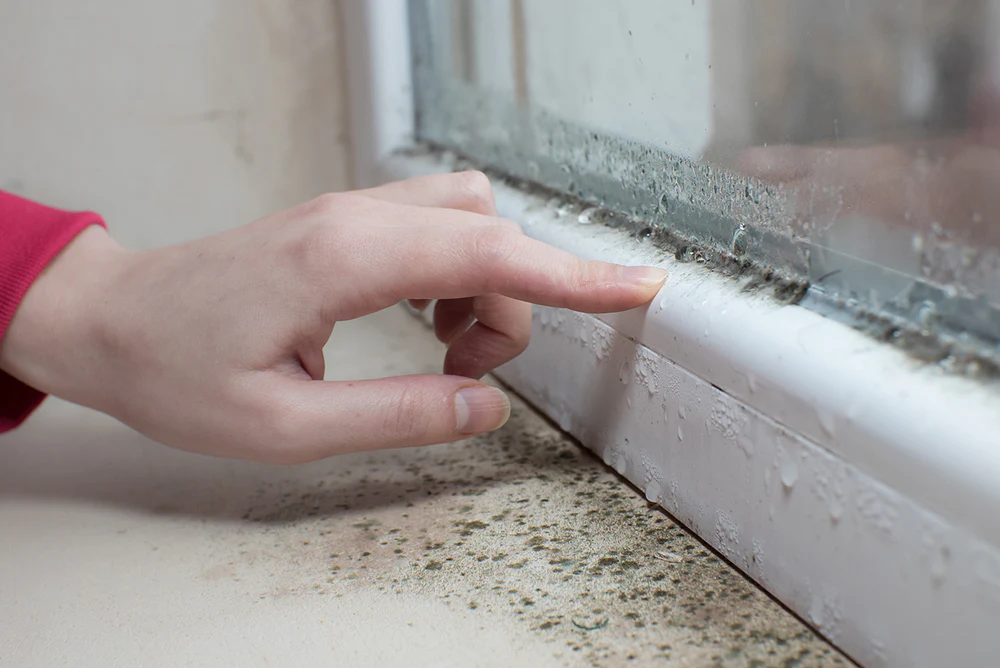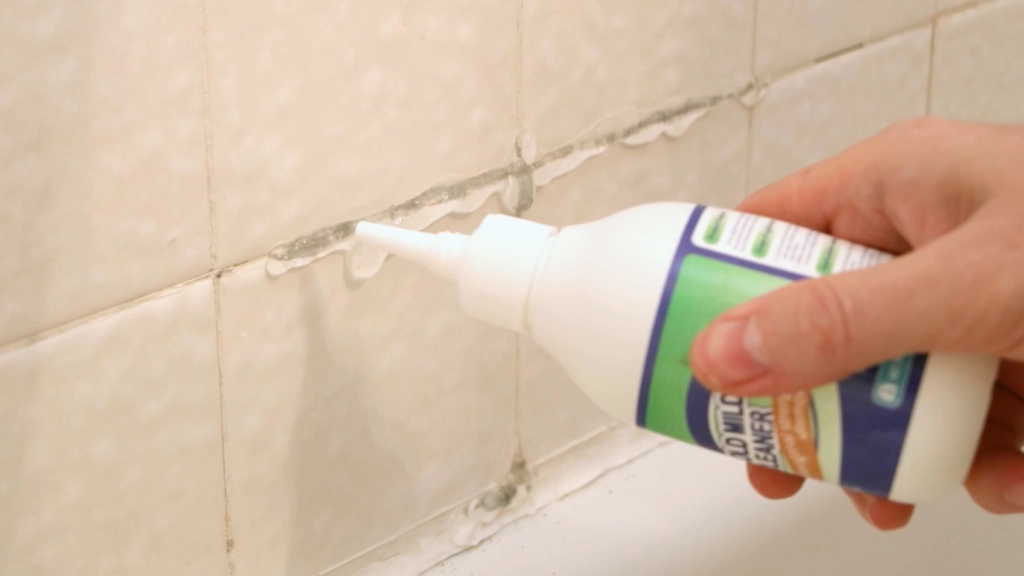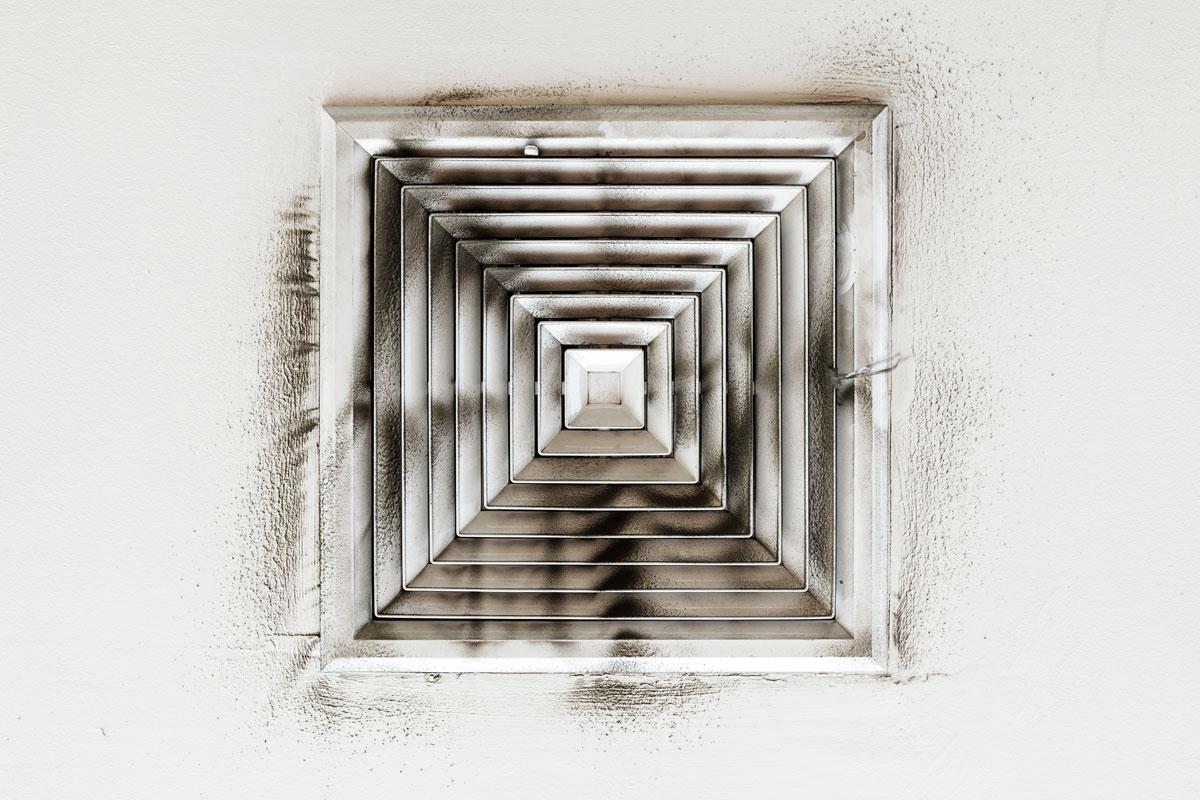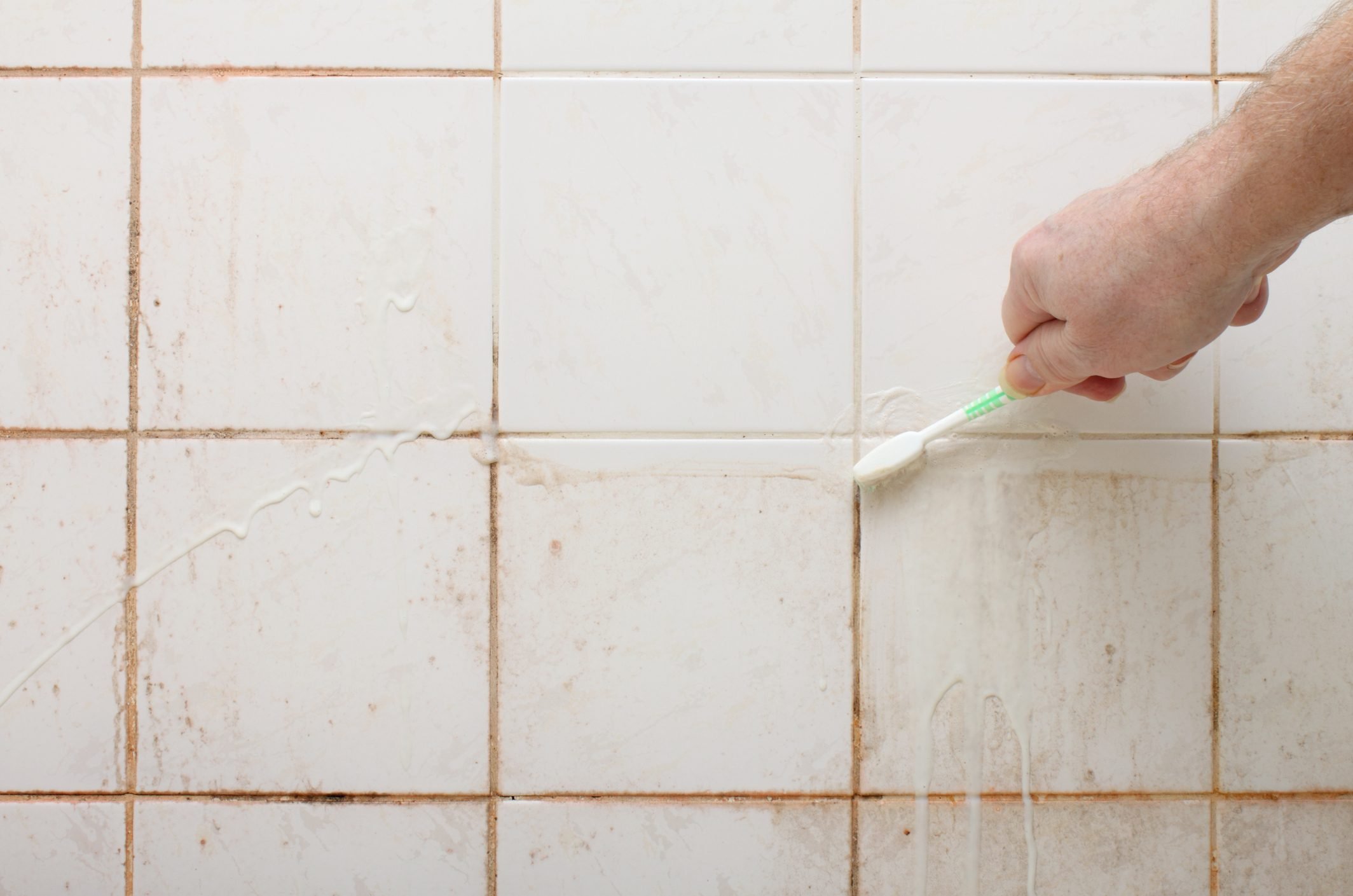
What Causes the Mildew Smell in Bathrooms?
The Environmental Protection Agency explains that mildew is a type of mold, and mold thrives in moist environments. Bathrooms, with their regular exposure to water, are the perfect breeding ground for mildew. Mildew typically forms on bathroom surfaces like tiles, grout, and caulking. Left untreated, it not only causes a musty odor but can also lead to more severe mold growth. The main causes of mildew smell in bathrooms include:
- Poor ventilation: Bathrooms that don’t have proper ventilation trap moisture, allowing mildew to grow.
- High humidity: Showers and baths release a lot of moisture into the air, creating a humid environment ideal for mildew.
- Leaky pipes or faucets: Hidden leaks behind walls or under sinks can cause water to pool, leading to mold and mildew growth.
- Standing water: Water left on surfaces such as tiles, shower curtains, or counters provides a breeding ground for mildew.

Addressing the root cause of the mildew smell is crucial for long-term mildew and mold prevention. If you’ve noticed a persistent mildew odor, it’s time to take action before it escalates into a more severe mold problem.
How to Get Rid of the Mildew Smell in Your Bathroom
Removing the mildew smell from your bathroom requires not only eliminating the mildew itself but also addressing the moisture issues that allowed it to grow in the first place. Here’s a step-by-step guide on how to get rid of that musty smell and stop mildew from coming back.
1. Clean All Surfaces
Mildew can cling to any surface in your bathroom, including walls, ceilings, grout, and caulking. Here’s how to clean mildew thoroughly:
- Bleach: Bleach is one of the most effective ways to kill mildew. Mix one cup of bleach with one gallon of water, and use a scrub brush to clean all affected areas. Be sure to rinse thoroughly afterward.
- Vinegar: For a natural alternative, vinegar works wonders on mildew. Spray white vinegar directly on the mildew spots, let it sit for an hour, then scrub with a brush and rinse.
- Baking soda: For stubborn mildew, combine baking soda with water to form a paste. Scrub the paste onto the affected area, leave it for 15 minutes, then rinse with warm water.
If mildew persists or you’re dealing with a larger problem, it might be time to call in the experts. Citywide Mold Mitigation specializes in mold and mildew removal, ensuring your bathroom stays fresh and mildew-free.

2. Improve Ventilation
Poor ventilation is one of the leading causes of mildew in bathrooms. To keep your bathroom free from that persistent mildew smell, follow these ventilation tips:
- Install an exhaust fan: If your bathroom doesn’t already have one, installing an exhaust fan can help remove moisture from the air, reducing the chance of mildew growth. Make sure to turn it on during and after showers.
- Open windows: If you have a window in your bathroom, open it after showering to allow fresh air to circulate and help dry out the space.
- Leave doors open: After using the bathroom, leave the door open for a while to allow air to flow through and reduce moisture buildup.
For more information on bathroom ventilation and how it helps prevent mildew, visit the Home Ventilation Institute.

3. Fix Leaks and Seal Cracks
Leaky faucets, showerheads, or hidden plumbing issues can cause standing water to collect in your bathroom, leading to mildew growth. Check for any signs of leaks and fix them immediately. Pay special attention to these areas:
- Under sinks and around toilets
- Showerheads and faucets
- Behind tiles or walls where pipes run
If you’re not sure where the leak is coming from or need professional help fixing plumbing issues, contact a licensed plumber for assistance. Regular maintenance of your bathroom’s plumbing is key to preventing future mildew smells.
How to Prevent Mildew in Bathrooms
Once you’ve gotten rid of the mildew smell, it’s important to prevent it from coming back. Here are some tips to keep your bathroom mildew-free:
1. Keep Your Bathroom Dry
Mildew thrives in damp conditions, so keeping your bathroom as dry as possible is essential. Here’s how to do it:
- Use a squeegee: After each shower, use a squeegee to remove excess water from your shower walls and doors.
- Wipe down surfaces: Regularly wipe down countertops, sinks, and other surfaces to remove standing water.
- Hang towels to dry: Always hang wet towels and washcloths to dry instead of leaving them in a pile, which can contribute to humidity and mildew growth.

2. Use a Dehumidifier
If your bathroom doesn’t get enough ventilation or if you live in a humid climate, using a dehumidifier can help reduce the moisture in the air. Set a dehumidifier to run for a few hours each day to keep your bathroom’s humidity levels in check.
For more insights on managing indoor humidity levels and preventing mildew, check out this guide on ventilation and moisture control from the U.S. Department of Energy.
3. Replace Old Caulk and Grout
Mildew loves to grow in the cracks of old caulk and grout. If you’ve cleaned your bathroom thoroughly but still notice the mildew smell, it might be time to re-caulk and re-grout. Old grout and caulk can hold moisture, creating an environment where mildew can thrive.

When to Call Citywide Mold Mitigation for Help
Sometimes, mildew or mold growth becomes too widespread for simple DIY solutions. If the mildew smell in your bathroom persists despite your best efforts, or if you see visible mold spreading, it’s time to call in the experts. Citywide Mold Mitigation provides professional mold removal services to eliminate mildew and mold, leaving your bathroom fresh and clean.
Our experts use advanced techniques to detect and remove mildew, preventing further growth and restoring your bathroom to a healthy environment. Whether it’s hidden leaks, moisture issues, or severe mold growth, Citywide Mold Mitigation can help you tackle even the toughest bathroom mildew problems.
FAQ
| Question | Answer |
|---|---|
| Why does my bathroom smell like mildew? | A mildew smell in the bathroom is usually caused by excess moisture, poor ventilation, or hidden leaks. Mildew thrives in damp environments, making bathrooms a common problem area. |
| How do I get rid of mildew smell in my bathroom? | To remove mildew smell, clean all bathroom surfaces with bleach, vinegar, or baking soda, improve ventilation, fix leaks, and keep the bathroom dry. |
| Is the mildew smell harmful? | While the smell itself isn’t harmful, it indicates the presence of mildew or mold, which can lead to respiratory problems or allergies if left untreated. |
| How can I prevent mildew in my bathroom? | Keep your bathroom dry by using a squeegee after showers, improving ventilation, using a dehumidifier, and regularly wiping down surfaces to remove excess moisture. |
| When should I call a professional for mildew removal? | If mildew or mold spreads beyond a small area, or if you can’t eliminate the smell, it’s best to call a professional like Citywide Mold Mitigation to handle the issue safely and effectively. |
If you’re dealing with persistent mildew or mold issues, contact Citywide Mold Mitigation for expert help today!

